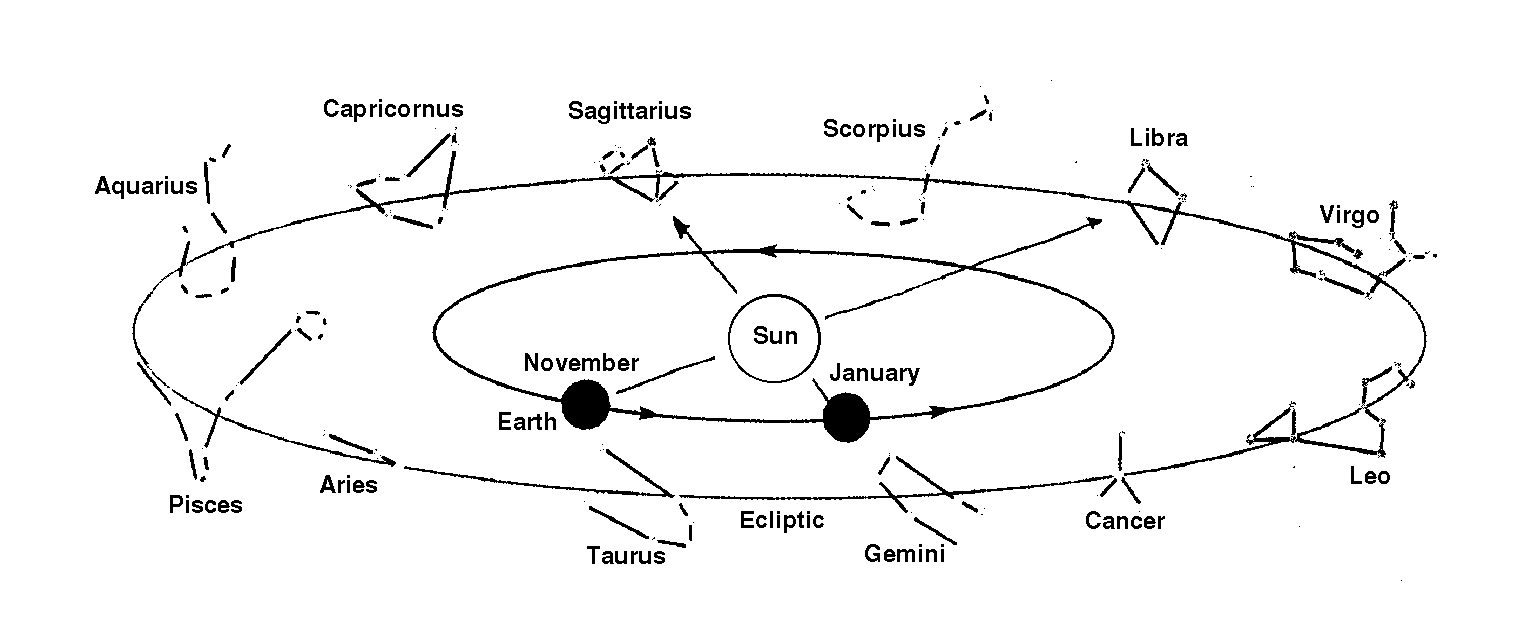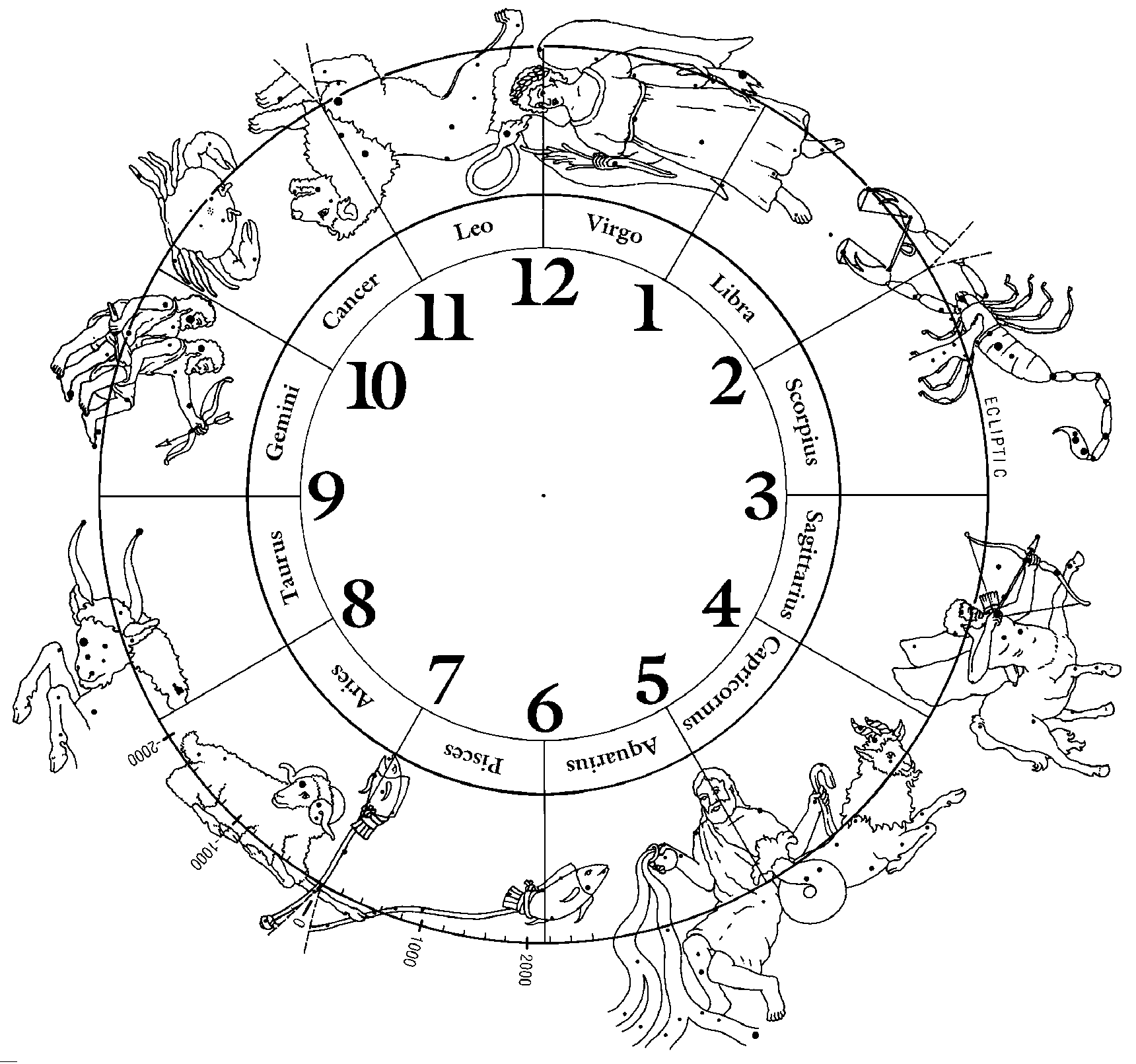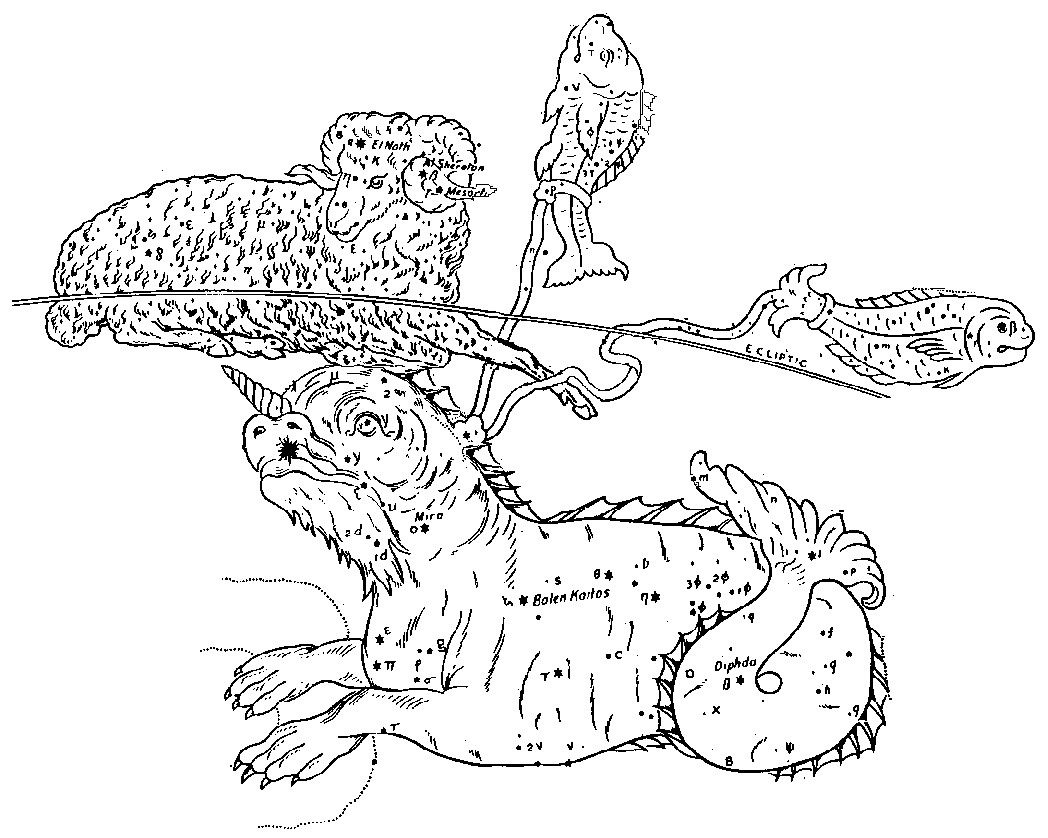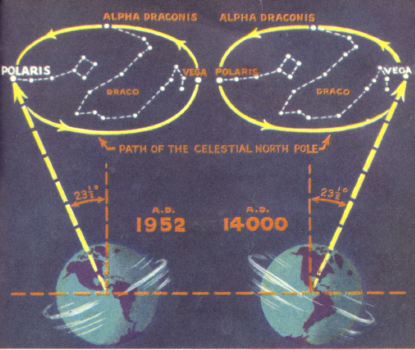
Reprinted from
Meridian Magazine
(26 Apr 2001)
©2001 by John P. Pratt. All rights Reserved.
| 1. Inspired Constellations |
| 2. Morning Stars Sang |
| 3. Cutting Bands of Death |
| Notes |
The scriptures teach that all things in the heavens testify of Jesus Christ (Moses 6:63). The last two articles in this series have shown how the Venus calendar and the Native American Sacred Round calendars witness to his divinity. This article completes the series by discussing how even the stars themselves act as celestial witnesses to the Resurrection, and even of the New Testament date for that glorious event on Sunday, April 3, AD 33.
The Book of Enoch, which was once in the Bible and was accepted by the Savior's apostles as written by Enoch himself (Jude 1:14), declares, "Thus, the signs, the durations of time, the years, and the days were shown to me [Enoch] by the angel Uriel" (1 Enoch 75:3).[2] Here, as elsewhere in the scriptures, the constellations are called "signs" (Gen. 1:14; Rev. 12:1,4, JST). A detailed study of the ancient symbolism of these figures, combined with scriptural references and a knowledge of their star names, implies that the constellations were designed to graphically display the entire mission of the Savior.[3] A brief introduction to the subject was included in a previous article.[4] As will be discussed in this article, the precise positions of the stars in the figures reveals a foreknowledge in the design which is far beyond human knowledge. To me, the constellation figures are a witness of the work of God and they testify of Jesus Christ.
David seems clearly to refer to the mute testimony of the constellations:
"The heavens declare the glory of God;
and the firmament sheweth his handywork.
Day unto day uttereth speech,
and night unto night sheweth knowledge.
There is no speech nor language,
without these their voice is heard.
Their line is gone out through all the earth,
and their words to the end of the world." (Psalms 19:1-4)
 |
Twelve of the constellations form a band around the sky through which the sun, moon, and visible planets all appear to travel (see Figure 1). That circle of constellations is called the zodiac. The apparent path of the sun is called the ecliptic. The zodiac constellations can be thought of as the twelve numbers on a huge clock face in the sky. The observer is at the center of the circle. At any given time only about half of the twelve are visible because the other half are below the horizon. The planets act as hands which move clockwise around the clock face to tell time (see Figure 2).
 |
This article focuses on just two of the twelve zodiac constellations. They are The Fishes (Pisces) at 7 o'clock and the Ram (Aries) at 8 o'clock. The two fish are tied by their tails with cords (bands) to a huge sea monster (Cetus). The Ram is the next constellation, and is sometimes drawn with his leg across the cords, as in the rendition in Figure 3 taken from the 1835 maps by Elijah Burritt. Most gospel interpreters agree on the obvious meaning: Christ is the Ram (Lamb of God) which breaks the bands of death which bind mankind to the sea monster (Cetus), who represents both Death and Hell.
 |
Compare this imagery to that of Jacob in the Book of Mormon:
"O how great the goodness of our God, who prepareth a way for our escape from the grasp of this awful monster; yea, that monster, death and hell, which I call the death of the body, and also the death of the spirit" (2 Nephi 9:10)
Both Jacob and the constellation imagery agree that Death and Hell are indeed an "awful monster." The imagery of the "bands of death" is also common throughout the Book of Mormon. For example:
"They are raised to dwell with God who has redeemed them; thus they have eternal life through Christ, who has broken the bands of death." (Mosiah 15:23, also v. 8)
". . . he breaketh the bands of death, that the grave shall have no victory, and that the sting of death should be swallowed up in the hopes of glory" (Alma 22:14)
Moreover, there is another image of the "chains of hell", which are represented in another constellation (Andromeda), a woman chained to a cliff, who is about to be devoured by the same sea monster. As pointed out by Jacob above, the bands of death refer to the physical death and the chains of hell refer to spiritual death. The imagery of the chains of hell has been used by both ancient and modern prophets:
"O that ye would awake; awake from a deep sleep, yea, even from the sleep of hell, and shake off the awful chains by which ye are bound, which are the chains which bind the children of men, that they are carried away captive down to the eternal gulf of misery and woe." (2 Nephi 1:13)
"And again I ask, were the bands of death broken, and the chains of hell which encircled them about, were they loosed? I say unto you, Yea, they were loosed, and their souls did expand, and they did sing redeeming love. And I say unto you that they are saved." (Alma 5:7,9; see also 5:7,10; 13:30)
"And the saints rejoiced in their redemption, and bowed the knee and acknowledged the Son of God as their Redeemer and Deliverer from death and the chains of hell." (D&C 138:23)
What is the meaning of the two fishes? It is well known that the fish was a symbol of the early Christians. The symbol is now being revived, and is commonly seen on bumper stickers. But why two fishes? Some have suggested that one fish represents Israel (Old Testament) and the other the Christians (New Testament). Others have said that it represents Church of Christ both before and after his coming.[5] After we consider the following discussion, the meaning will become much more clear.
Having recognized the meaning of the Ram who is breaking the bands of death with his leg, let us see how the exact timing is also shown in the stars.
It turns out that both of the morning stars were right at one of the two bands of death, with Venus nearly stationary at it and Mercury moving across as if to be cutting it. As we have seen, both of these morning stars represent Christ, and Venus was right at the "Resurrection" day in it's cycle. Thus, this imagery serves as yet another witness for the correctness of that date. Venus and Mercury only align on a band every few years, and did not occur at the other more widely accepted proposed date for the Resurrection in AD 30. Because this sign recurs fairly frequently, it is not by itself a conclusive witness for the date, but it is one of many. There is, however, another celestial gong that sounded at that time which only struck once in all of history.
Our Gregorian calendar is designed to keep the vernal equinox (sometimes loosely called the "First day of Spring") on March 20 or 21. That is the spring day on which the sun rises most nearly due east. It marks the time when the sun crosses from the southern half of the sky to the northern, bringing longer and warmer days to the northern hemisphere. "Equinox" simply means "Equal nights" meaning that it is the day on which the day and night have the same duration. "Vernal" refers to spring; there is also an autumnal equinox in the fall when the days and night are again of equal length.
 |
The position on the ecliptic of the sun at the vernal equinox was between the horns of the Bull (Taurus) during the days of Adam, which was apparently represented in Egyptian hieroglyphs by a bull with the sun between its horns. Then around the time of Abraham, it moved into the constellation of the Ram (Aries), and became known as the "first point of Aries". Even today, someone born on March 21st is said to be born when the sun was in the sign of Aries, but that correlation is 4,000 years out of date. About the time of Christ the vernal equinox moved into The Fishes (Pisces), and now it is nearing The Water Bearer (Aquarius).
The digression explaining the precession of the equinoxes was necessary to appreciate a very subtle yet precise witness of the date of the resurrection of Jesus Christ. This very slow celestial motion could clearly be useful for measuring very long ages throughout history, and there is evidence that the Lord has used it. For example, in the Book of Enoch, a dream of Enoch is recorded which encapsulates all of human history, including the restoration of the gospel and the eventual dominion of the Kingdom of God. People are represented by animals in the dream. All of the patriarchs from Adam through Isaac are represented by cattle, but beginning with Jacob they are represented as sheep up to the time of Christ (Enoch 84-89). After the time of Christ the Christians referred to themselves as fish. All three of these types can be understood by referring to the different ages according to the precession of the equinoxes. The first patriarchs all lived in the Age of Taurus, the Bull, corresponding to the cattle imagery. The next set lived during the Age of the Ram, and were represented as sheep. With Christ began the Age of the Fishes, and the Christians characterize themselves as fish. The next age will be the Age of the Water Bearer, so the saints should be represented by people. The Water Bearer is another type of Christ because he is the man who brings the living water to pour out on the head of the fish.
 |
Even astronomers don't know exactly when the different ages begin, or exactly how long they are. There have been several problems. First, the coordinate systems used by astronomers are not even tied to the stars, but rather to the earth and sun. Astronomers don't think of the precession as being the equinox moving along the ecliptic through the stars, but rather the star maps themselves precessing past a fixed equinox tied to the earth (the point due east on March 20/21). That is defined to be the zero point from which they measure. That tradition began before astronomers had even discovered the precession of the equinoxes. To this day, astronomers still have to make new star maps about every 50 years because of precession. If we did that with maps of the earth, it would mean that longitude would not be measured from a fixed point on the earth, as we do from Greenwich England, but from a point slowly drifting across the ocean, such as a super slow ship. As that zero-point ship would drift, we would have to update all the maps in the world. The second problem is that astronomers have defined the boundaries of the constellations in an arbitrary way, which is not particularly useful if one is concerned about what the angel showed Enoch. Fortunately, many of the exact ancient star positions have been preserved because it was believed that the figures had been drawn by a divine hand. The third problem is that no uniform rate of the precession has been agreed upon; it varies slowly from year to year and no need has been recognized to define a constant rate.
To solve the first problem, I chose one fixed star to be the zero point of "sidereal longitude" (meaning longitude measured relative to the stars, similar to longitude on earth). The star chosen seems to be one indicated in the constellations themselves, being in the head of the head constellation, the Virgin (the number 1 on the clock). It is the left eye of the Virgin as shown in Figure 2. Moreover, there are several other natural markers about 30 degrees apart around the ecliptic circle. One of those natural boundary markers is the eastern cord of The Fishes. It is very nearly perpendicular to the ecliptic and serves as a fine natural constellation boundary. When I submitted this new coordinate system to astronomical journals, it was claimed that the current systems are adequate. I have decided to publish it on my own web site at this time because it is now needed to understand this witness of Jesus Christ.[6]
Knowing the starting point, the second problem of knowing the precise edge of the constellations is solved by assigning each of the twelve zodiac constellations exactly 30° along the ecliptic, even though the actual pictures vary from that average. And the third problem, the rate of precession can be assigned the uniform rate of exactly 1° each 72 years, being exactly 50" per year, which is an excellent average over the history [7]. The last detail is to define the position of the uniform precession on some precise date so that it can be used as a clock hand. I defined it to be entering the constellation of the Fishes on the spring equinox of the year 1 BC very near to the beginning of our usual calendrical era. The mean equinox must be defined very near that date in order for it to stay close to the true equinox throughout history. As mentioned above, the edge of the constellation of the Fishes is marked by the eastern Band, which is nearly perpendicular to the ecliptic and forms a fine natural marker. Thus, using this system, the Age of Pisces, the Fishes, began on March 21, 1 BC on our calendar, about two weeks before the birth of Christ. And because the eastern band approximately marks that boundary, symbolically, the eastern band was broken at the birth of Christ. This however, is by my design, which I'm hoping might be very near to God's design, because it uses all of the natural star boundaries for the constellations. Thus cutting of the Bands of Death is not the witness I'm referring to because it is designed into the system. The witness occurred at the Resurrection, not the birth, of the Savior.
 |
Now consider what the two fish represent. The first one spans the time on the ecliptic which corresponds to about 100 BC to AD 300. That fits very nicely with the Church of Jesus Christ, remembering both the Eastern and Western Hemisphere. The second fish begins very nearly at the year 1800 and extends well into the Millennium. Thus to me it seems most probable that the two fishes represent the early Church of Jesus Christ and the restored Church of Jesus Christ of Latter-day Saints.
In conclusion, there are many celestial witnesses of the dates of the birth and resurrection of Jesus Christ. Surely these are the kinds of "signs" that the Lord had in mind when he told Moses that the planets and stars were for "signs and for seasons" (Gen. 1:14). There were clear signs of his birth, which the wise men correctly read. And there were signs of his Resurrection. There are many witnesses that the date of the Resurrection was Sunday, 3 April AD 33: (1) it is the precise date indicated by all four of the Gospels, (2) it is indicated by the combined testimonies of the Book of Mormon which indicates the exact length of the Savior's life, combined with the Doctrine and Covenants which indicates the day of his birth,[9] (3) it is indicated as coinciding with the very day of the Resurrection of Venus, (4) the planet Mercury adds its witness by being right on its Creation day at the birth, baptism and also resurrection of Christ, (5) it was right on the day of the offering of the sheaf of the firstfruits of the ground according to the Hebrew Calendar, (6) both the planets Mercury and Venus were right at one of the Bands of Death constellation, and (7) the mean vernal equinox cut the very star representing the knot in the band of death at the tail of the first fish at that time. Truly the record in the heavens testifies of the greatest event in history, the Resurrection of our Lord and Savior, Jesus Christ.